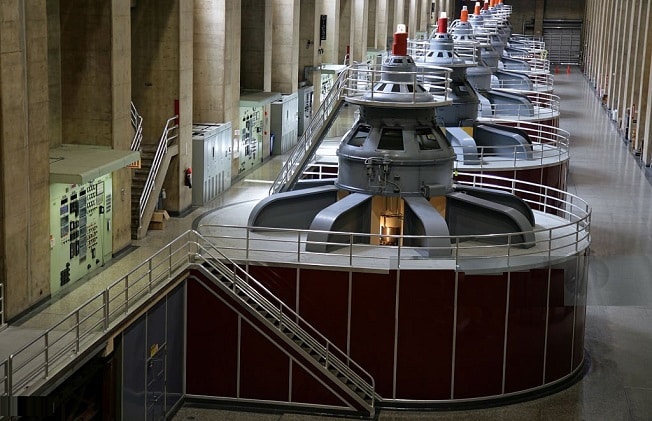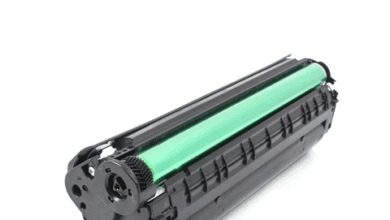Hydroelectric Generators: Guide to Sustainable Energy

The hydroelectric generators are essential because they assist in converting water into electricity and hence provide a source of the abundant energy to millions throughout across the globe. As problems about worldwide warming and the superior of renewable electricity rise, hydroelectric power nevertheless unearths itself amongst one of the pinnacle options available in terms of energy manufacturing. How Hydroelectric Generators showbizztoday.com Work and Positives of this Technology in Relation to a Greener Future
Hydroelectric Power Plant
Hydropower Fundamentals
The hydroelectric generator is a machine that can convert kinetic energy of flowing water into electrical energy. Traditionally, this process consists of a dam controlling the flow from water and passing it through turbinesto rotate and produce electricity. By drawing the flow of water, which is a renewable resource by nature; hydroelectric power has been one foundation for realizing tangible green energy created.
How does a hydropower generator work?
The underlying principle behind hydroelectric generators is a simple yet the most efficient mechanism of converting mechanical energy into electrical energy. A deeper look into generatorsHere is a step by step explanation of how these remediation functions are able to generate these test negativity.
Water Current: Water sitting at a dam or river is released and guided right into the turbine.
Turbine Rotation: The strength generated by the flowing water spins the blades of turbine.
Energy Conversion: This nasty habit is supported by the turbine which spinning around to make electrical energy with it.
Electricity Distribution: The power lines carry the produced electricity to houses, commercial centers and industries.
Hydroelectric Generators and their Types
Different environments and needs are suited to other types of hydroelectric generators.
Impulse Turbines: Work best for high-head (water falling from a height) and low-flow applications.
Reaction Turbines: work in low-head high flow cases, such as a big river with little elevation changes.
Pumped Storage: the water is lifted to a higher level through electric pumping so that it can be released when needed in times of high consumption.
Advantages of Utilizing a hydroelectric Power Plant
Sustainable and Renewable Energy Source
One of the most constant renewable energy generators is hydroelectric power. It is also an environmentally friendly choice as it produces no greenhouse gas emissions at all in operation, whereas burning fossil fuels does. The water that is used in hydropower is naturally replaced by the hydrological cycle, providing an ongoing supply of energy.
Efficient and Reliable
Hydroelectric generators can be over 90% efficient, converting the available power into electricity. They can generate 24/7, which makes for a constant and stable flow of power. Which is why they are so important to the grid, especially in areas with an abundance of water.
Economic Advantages
Construction requires capital and is accompanied by relatively low operational and maintenance costs for hydroelectric power plants. Decades of operation — Typically hydroelectric generators have a long lifespan (50+ years) so this can help return the initial investment on energy production in the long term and it will be very good for property taxes. They also help with energy independence as we no longer need so many fossil fuels imported.
Supporting local communities and preserving ecosystems
By providing clean energy as well, hydroelectric projects are often accompanied by programs for supporting local communities and sustainable development. Some hydroelectric dams and reservoirs can offer opportunities for recreation as well, improve water supply quality, or even reduce downstream flood risks.
Challenges and Considerations
Environmental Impact
Though hydroelectric power is considered an environmental friendly source of electricity, it’s not simple. Dams and reservoirs create entirely new landscapes, which can be damaging to areas downstream from the dam. In light of these effects, it is a necessity to look at how to mitigate them by e.g. building fish ladders and improving water management guidelines).
Social Implications
But, the process of creating these grand hydro-electric projects can lead to evacuating people.There is also a critical question of how these projects are built, with the engagement and consent from affected communities. The latter can happen through better inclusive planning and fair compensation.
Hydropower and Global Warming
Climate change is also putting hydroelectric generators at risk. Changes in the timing and quantity of precipitation, decreases in snowpack at higher mountain elevations, shifts to earlier peak flows during spring runoff from melting snow (reversing a natural process expected under warming climatic conditions), changes to late summer flow levels or water temperatures which can put stress on organisms upstream needing cold water refuges—such as fish populations–and drinking-water supply for downstream municipalities. With more rapid climate change, making sure our energy production plans are resilient to run of the river hydrosystems will likely be necessary.
What Do Hydroelectric Generators Look Like in the Future?
New Technologies for Hydro-production
Hydroelectric energy is not the past, but rather a growing renewable solution to power our homes and businesses. Improvements in the design of turbines, stronger materials, and more efficient water management have created sustainable solutions that work with changing environments.
Mino Hydropowlit, Small, and Micro Hydropowlit
This is coupled with a growing popularity to look at small scale and micro-hydropower systems. These smaller systems are also simpler to set up and can be managed in remote locales or someplace where getting linked to the primary power grid is not practical. This can be a great way to take renewable energy into the mainstream.
Integrating Hydro with Other Renewables
With the evolution of a more multi-faceted energy mix globally, blending generation like hydroelectric with other renewables such as wind and solar is now critical. For instance, hydroelectric plants may provide backup power when wind or solar energy generation is low helping to stabilize the grid.
Conclusions: Hydroelectric Generators As Sustainability Fixes
Hydroelectric power generators form the backbone of renewable energy in countries all over the world, providing a consistent and efficient way to harness electricity from nature’s bounteous supply of running water.Therefore, with costs against it whilst acknowledging also that not all such projects run so easily: our careful application of this natural energy source which gives us an economically competitive way to produce electricity can without doubt prove advantageous.
Seeing as the technology that powers hydroelectric generators has always been constantly improving and considering this newfound consciousness around energy production’s adverse environmental and social side effects, I am confident in saying that these goliaths are going to be a major player in our future efforts at creating an agile, inclusive new world of power. In a future where hydroelectric power brings innovation and opportunity, this could be through grand projects or smaller initiatives within local communities.




